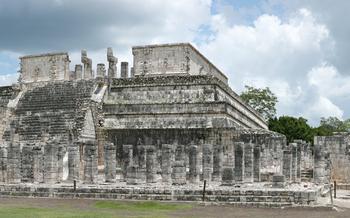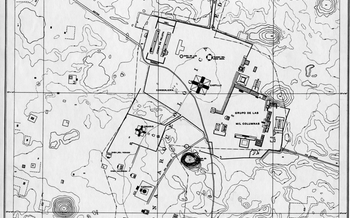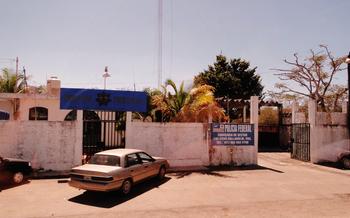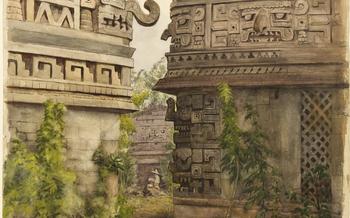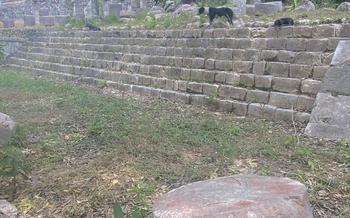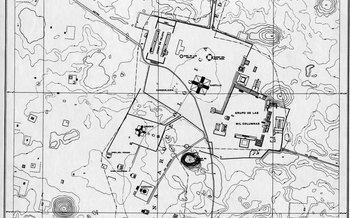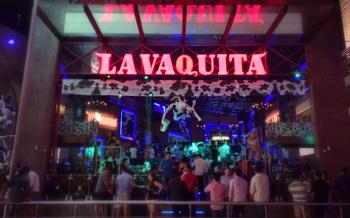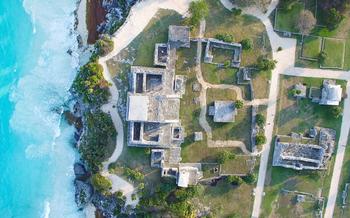
Cenote Chelentun
- Swimming and Snorkeling in the Cenote
- Exploring the Cenote's Underground Caves
- Planning Your Visit to Cenote Chelentun
- Photography Tips for Capturing the Beauty of Cenote Chelentun
- Conservation and Sustainability at Cenote Chelentun
- Safety Precautions for Visitors
- Local Cuisine and Restaurants Near Cenote Chelentun
- Combining Cenote Chelentun with Other Activities in the Area
- Historical Significance of the Area Surrounding Cenote Chelentun
- Insider Tip: Secret Spots and Hidden Gems
Swimming and Snorkeling in the Cenote
Cenote Chelentun offers an unparalleled experience for swimming and snorkeling enthusiasts. Its crystal-clear turquoise waters, with visibility reaching up to 30 meters, provide a breathtaking glimpse into the underwater world. Swimmers can enjoy a refreshing dip in the cool, clear waters, while snorkelers will be amazed by the diverse marine life that calls this cenote home. From colorful tropical fish darting among the rock formations to gentle sea turtles and curious crustaceans, there's always something new to discover beneath the surface.
Whether you're a beginner or an experienced swimmer, Cenote Chelentun is an ideal spot to immerse yourself in its pristine waters. The cenote's calm and tranquil atmosphere, coupled with its gradual depth increase, makes it suitable for swimmers of all levels. For those seeking a more adventurous experience, snorkeling in the cenote's deeper sections reveals a hidden world of underwater caves and tunnels, teeming with aquatic life.
To ensure a safe and enjoyable swimming and snorkeling experience, it's advisable to follow a few simple guidelines. Wear appropriate swimwear and water shoes to protect your feet from sharp rocks. Use biodegradable sunscreen to minimize harm to the cenote's delicate ecosystem. Stay hydrated by drinking plenty of water, especially after spending time in the sun. And most importantly, always swim or snorkel with a buddy for added safety.
Exploring the Cenote's Underground Caves
Venturing into the underground caves of Cenote Chelentun is a captivating experience that unveils the hidden wonders beneath the earth's surface. Guided tours led by experienced professionals provide a safe and immersive exploration of the intricate cave systems. Adorned with stalactites and stalagmites, these caves offer a glimpse into the geological history of the region. During these expeditions, visitors might encounter ancient Mayan artifacts and pottery, providing a tangible connection to the region's rich cultural heritage. Conservation efforts are actively undertaken to preserve the delicate cave environment, ensuring that future generations can continue to marvel at these subterranean treasures.
Planning Your Visit to Cenote Chelentun
To make the most of your visit to Cenote Chelentun, plan your trip carefully. The best time to visit is during the dry season (November to April) when the weather is pleasant, and the water is at its clearest. Avoid the rainy season (May to October) when the cenote can become crowded, and the water visibility may be reduced.
Set aside at least half a day to fully experience the cenote. This will give you ample time to swim, snorkel, explore the caves, and relax by the cenote.
Pack appropriate items for your visit, including swimwear, towels, sunscreen, insect repellent, and a change of clothes. You may also want to bring a snorkel mask and fins if you plan on snorkeling.
The cenote has basic facilities, including restrooms, showers, and changing rooms. There are also designated areas for picnicking and relaxation, where you can rent hammocks or lounge chairs.
To ensure a safe and enjoyable visit, follow the safety guidelines posted at the cenote. Lifeguards are on duty during peak hours, but it's always advisable to swim with a buddy and avoid diving into shallow areas.
Photography Tips for Capturing the Beauty of Cenote Chelentun
The crystal-clear waters, unique rock formations, and lush vegetation of Cenote Chelentun present a photographer's paradise. To capture the beauty of this natural wonder, consider these tips:
Camera Settings: For underwater photography, use a waterproof camera or housing. Set your camera to aperture priority mode (A/Av) and select an aperture of f/8 to f/11 for sharp images. Adjust the ISO as needed to achieve a balanced exposure.
Use Natural Light: Take advantage of the natural light filtering through the jungle canopy. Avoid using flash, as it can create harsh shadows and reflections. Position yourself so that the sun is behind you when shooting above water, and use a diffuser or shoot in the shade to prevent overexposure.
Focus on Details: Capture the intricate details of the cenote, such as the stalactites, stalagmites, and underwater rock formations. Use a macro lens or get close to your subject to highlight these features.
Compose Your Shots: Experiment with different angles and perspectives to create dynamic compositions. Look for leading lines, such as the tree roots descending into the cenote, to draw the viewer's eye into the image.
Experiment with Shutter Speed: Play with different shutter speeds to capture the movement of the water. A slow shutter speed can create a sense of motion, while a fast shutter speed can freeze the action, such as a diver entering the water.
Respect the Environment: Be mindful of your impact on the cenote's ecosystem. Avoid disturbing the wildlife or damaging the delicate rock formations. Follow the photography guidelines provided by the cenote's management to ensure you're capturing the beauty of Cenote Chelentun responsibly.
Conservation and Sustainability at Cenote Chelentun
The preservation of Cenote Chelentun's pristine environment and rich biodiversity is a top priority for local authorities and conservationists. Visitors are encouraged to adopt responsible practices to minimize their impact on the ecosystem. Guidelines for sustainable tourism include adhering to designated trails, respecting wildlife, and properly disposing of waste.
Cenote Chelentun is an important habitat for various aquatic and terrestrial species, and its delicate ecosystem requires careful stewardship. Visitors are advised to avoid touching or disturbing the cenote's unique rock formations and stalactites. Using eco-friendly sunscreen and avoiding harsh chemicals that can harm the water quality is also essential.
Supporting local conservation initiatives and organizations is a meaningful way to contribute to the preservation of Cenote Chelentun. These initiatives often involve research, monitoring, and education programs aimed at protecting the cenote's environment and ensuring its long-term sustainability.
By embracing responsible tourism practices and respecting the natural wonders of Cenote Chelentun, visitors can help preserve its beauty and ecological integrity for generations to come.
Safety Precautions for Visitors
Cenote Chelentun prioritizes the safety of its visitors. Lifeguards are stationed at the cenote to ensure a safe and enjoyable experience for all. They are trained to respond to emergencies and provide assistance if needed. Visitors are encouraged to swim within designated areas and avoid swimming alone or diving into shallow parts of the cenote. Wearing appropriate footwear with good traction is recommended to prevent slipping on the rocks. Staying hydrated and protecting against sun exposure by using sunscreen and hats is essential. Visitors are advised to be mindful of their surroundings and respect the natural environment by avoiding littering and disturbing the wildlife. By following these safety precautions, visitors can ensure a safe and memorable experience at Cenote Chelentun.
Local Cuisine and Restaurants Near Cenote Chelentun
After a refreshing swim and exploration in Cenote Chelentun, indulge in the culinary delights of the Yucatan Peninsula. Several restaurants near the cenote offer a taste of authentic Mexican cuisine. Try traditional dishes such as cochinita pibil, a slow-roasted pork dish, or panuchos, tortillas filled with black beans and topped with turkey or chicken.
For a memorable dining experience, visit the nearby town of Valladolid, known for its gastronomy. Savor the flavors of poc chuc, grilled pork marinated in achiote paste, or sip on a refreshing agua de lima, a lime-based beverage. Vegetarian and vegan options are also available, ensuring everyone can enjoy the local cuisine.
After your cenote adventure, treat yourself to a delicious meal that reflects the rich culinary heritage of the Yucatan. Support local eateries and engage with the friendly locals who are passionate about sharing their traditional dishes.
Combining Cenote Chelentun with Other Activities in the Area
Cenote Chelentun can be seamlessly incorporated into a broader itinerary, offering a diverse range of experiences in the vicinity. The Yucatan Peninsula is a treasure trove of natural wonders, cultural attractions, and historical sites, all within easy reach of the cenote.
For history buffs, a visit to the ancient Mayan city of Chichen Itza, a UNESCO World Heritage Site, is a must. Explore the iconic pyramid El Castillo, marvel at the intricate carvings of the Temple of the Warriors, and learn about the sophisticated Mayan civilization that once flourished here.
Colonial enthusiasts will delight in the charming town of Valladolid, renowned for its colorful architecture, vibrant markets, and picturesque main square. Stroll along the cobblestone streets, visit the 16th-century Convent of San Bernardino de Siena, and soak in the town's laid-back atmosphere.
Beach lovers can indulge in the pristine coastline of the Riviera Maya, just a short drive from Cenote Chelentun. Relax on the white-sand beaches, swim in the crystal-clear waters of the Caribbean Sea, or explore the vibrant coral reefs teeming with marine life.
Transportation options in the Yucatan Peninsula are varied and convenient. Rental cars provide the freedom to explore at your own pace, while organized tours offer a hassle-free way to visit multiple attractions. Local buses and colectivos (shared vans) are also available for budget travelers.
To enhance your experience, consider booking a tour with a knowledgeable local guide. They can provide insights into the region's history, culture, and ecology, ensuring a truly immersive and enriching journey.
Historical Significance of the Area Surrounding Cenote Chelentun
The area surrounding Cenote Chelentun holds immense historical significance, as it was once home to thriving Mayan settlements. Archaeological excavations have revealed ancient ruins, artifacts, and remnants of Mayan dwellings, offering a glimpse into their rich culture and way of life. Cenote Chelentun itself is believed to have been a sacred site for the Maya, used for water, bathing, and ritual ceremonies. Its crystal-clear waters were considered a source of life and purity, and offerings such as pottery, jewelry, and jade figurines have been found in the cenote, suggesting its religious importance. Exploring Cenote Chelentun and its surroundings is not just a journey into nature's beauty but also a journey through time, connecting visitors to the rich history and cultural heritage of the ancient Maya.
Insider Tip: Secret Spots and Hidden Gems
For those seeking a truly unique experience, Cenote Chelentun holds hidden gems waiting to be discovered. Venture off the main path and explore the surrounding jungle for secluded spots where you can enjoy the cenote's beauty in solitude. Look for smaller, less-visited cenotes nearby, each offering its own charm and tranquility. Engage with local communities to learn about hidden treasures and secret spots, such as caves or viewpoints that offer breathtaking vistas of the surrounding landscape. Embrace the spirit of adventure and unlock the secrets that Cenote Chelentun has to offer.
